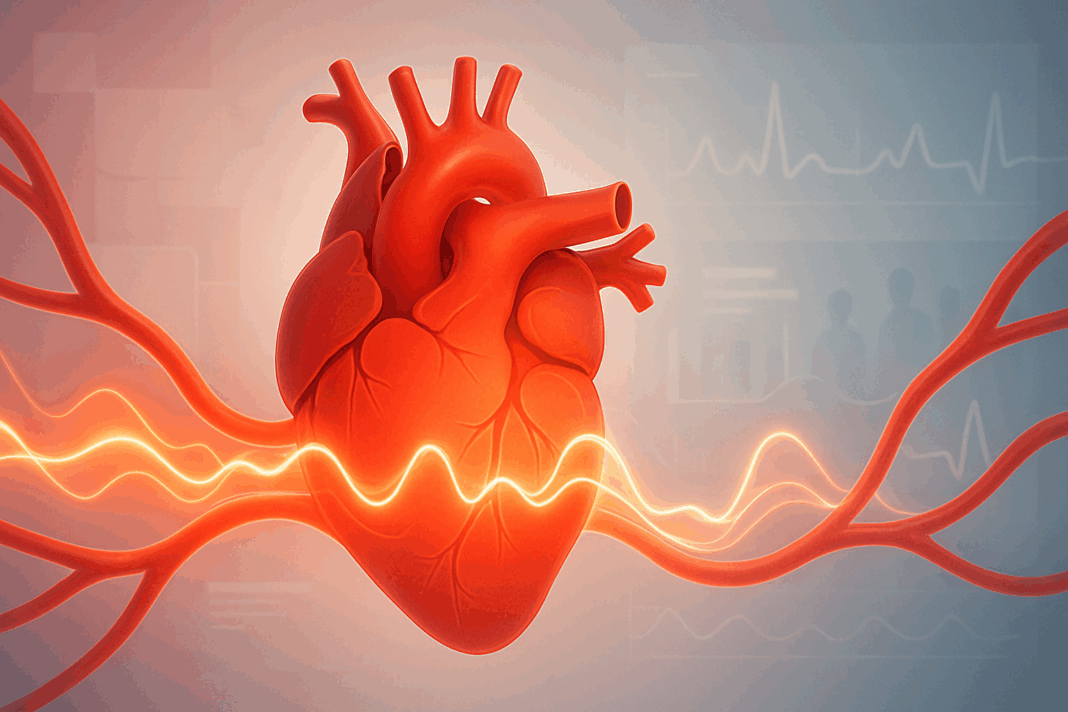Understanding systolic blood pressure—and more importantly, understanding what makes the top number high—is critical for managing cardiovascular risk and improving long-term heart health. Systolic blood pressure represents the force your heart exerts on artery walls when it beats, and elevated readings are a red flag that should never be ignored. While many people are familiar with the dangers of high blood pressure in general, fewer understand what causes the top number of blood pressure to be high, what high systolic blood pressure indicates, and how to lower the top number safely and effectively. This article explores the causes of elevated systolic pressure and offers practical, science-backed strategies to reduce it, all while maintaining a focus on evidence-based medicine and the EEAT (Experience, Expertise, Authoritativeness, and Trustworthiness) standards critical for credible health information.
You may also like: Sudden Spikes in Blood Pressure: What Can Cause a Sudden Increase and When to Seek Medical Attention
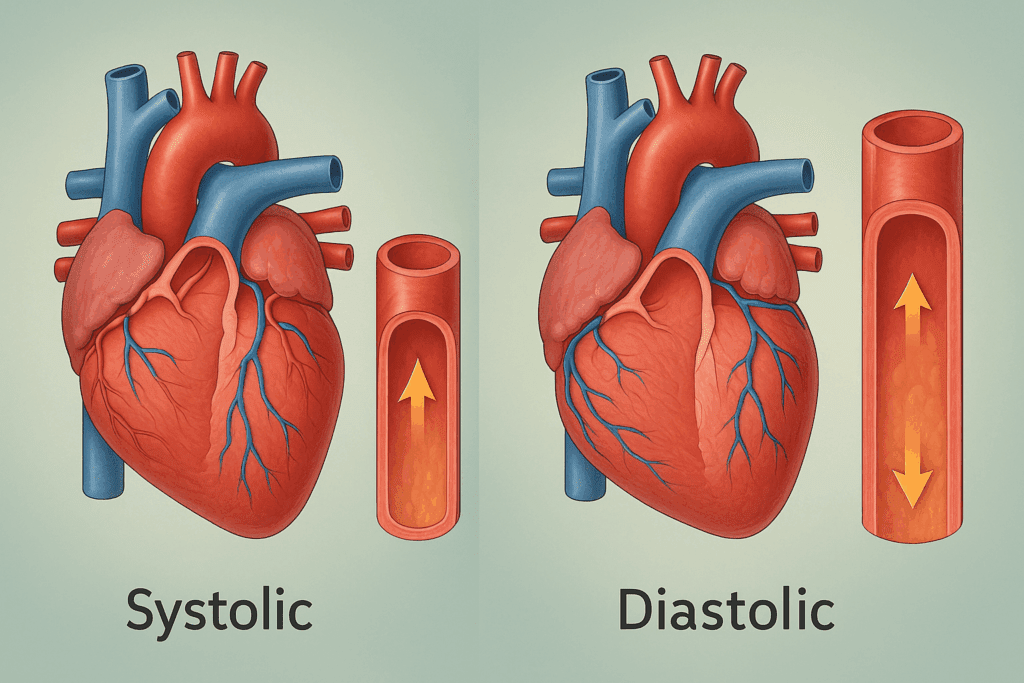
Systolic vs. Diastolic: Why the Top Number Matters
Blood pressure readings consist of two numbers: systolic and diastolic. The top number, systolic, measures the pressure in your arteries when your heart contracts. The bottom number, diastolic, reflects the pressure between heartbeats when the heart is at rest. Though both are important, elevated systolic pressure is especially concerning because it places direct stress on the arteries and is more closely linked with risks like stroke, heart attack, and kidney disease. One might wonder, why is my systolic blood pressure high when my diastolic is normal? This condition, known as isolated systolic hypertension, is particularly common in older adults but can occur at any age.
The causes of high systolic blood pressure are complex and often multifactorial. Aging naturally stiffens the arteries, contributing to an increased systolic load. However, lifestyle choices, genetics, hormonal imbalances, kidney function, and chronic inflammation can all contribute. Understanding what causes increased systolic blood pressure requires looking at both modifiable and non-modifiable risk factors—and addressing both in a treatment plan. For those asking, what does a high systolic blood pressure indicate?—it signals that the heart is working harder than it should, often due to increased resistance in the arteries or an overactive sympathetic nervous system.
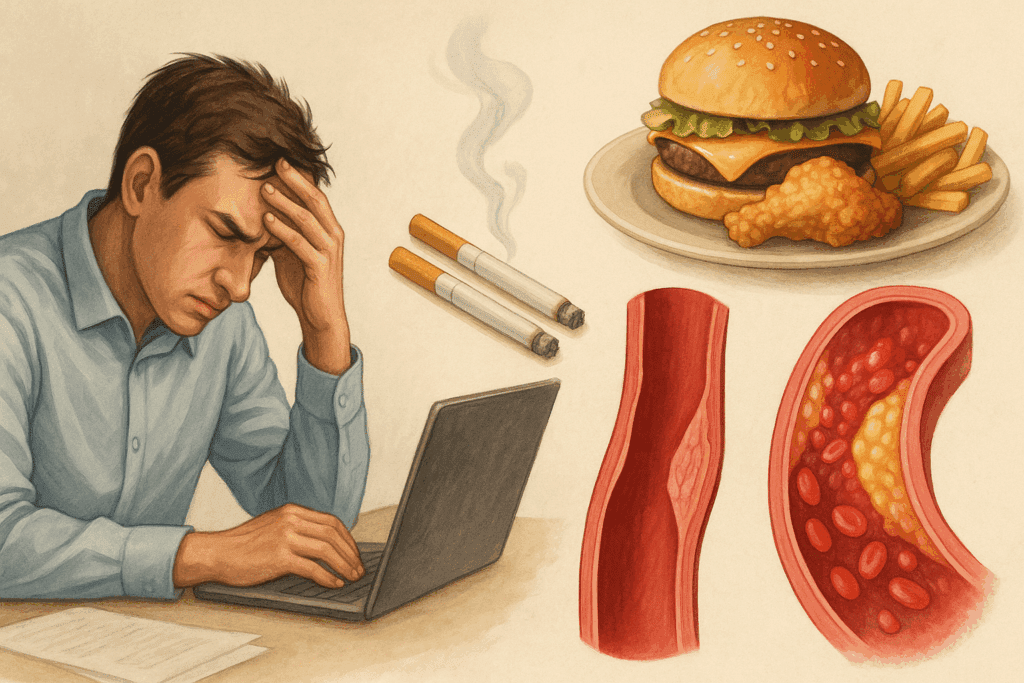
Why Is My Systolic Pressure High? Common and Overlooked Causes
Identifying the underlying causes of high systolic blood pressure is the first step in managing it effectively. For many, the question isn’t just why is my systolic pressure high, but rather, what makes systolic blood pressure high in my specific case? For some, it may be a sodium-heavy diet or chronic stress; for others, it might be sleep apnea, hormonal dysregulation, or an undiagnosed thyroid disorder. Lifestyle habits such as smoking, excessive alcohol consumption, and physical inactivity all play a role, as does weight gain—especially abdominal obesity, which increases systemic inflammation and vascular resistance.
There are also physiological explanations for why systolic pressure tends to rise. The stiffening of arterial walls with age, combined with reduced nitric oxide production and endothelial dysfunction, leads to increased vascular resistance. This is a major reason why systolic blood pressure tends to rise even when diastolic pressure remains within the normal range. Meanwhile, kidney disease and insulin resistance can contribute to fluid retention and vascular constriction, which in turn elevate the top blood pressure number. Understanding the specific causes of high systolic pressure in each patient’s context is key to developing a targeted plan for how to get systolic blood pressure down.
What Does High Systolic Pressure Mean for Cardiovascular Health?
Elevated systolic pressure is not a benign condition. In fact, among all blood pressure abnormalities, high systolic readings are one of the most predictive markers for cardiovascular events. Studies consistently show that systolic blood pressure is more closely linked to heart disease than diastolic in individuals over 50, but high systolic readings at any age should be taken seriously. So, what does high systolic pressure mean for the heart and arteries? Over time, it can damage the delicate endothelial lining of the vessels, promote atherosclerosis, and increase the workload on the heart.
When the heart has to pump against elevated resistance, the left ventricle thickens—a condition known as left ventricular hypertrophy. This adaptation initially helps the heart cope but eventually reduces its efficiency and can lead to heart failure. Moreover, high systolic pressure increases the risk of stroke by weakening blood vessels in the brain. Those asking what does an elevated systolic blood pressure indicate should consider it a warning sign of vascular strain, endothelial injury, and potential systemic dysfunction. This underscores the urgency of knowing how to lower the top number of blood pressure before long-term damage occurs.
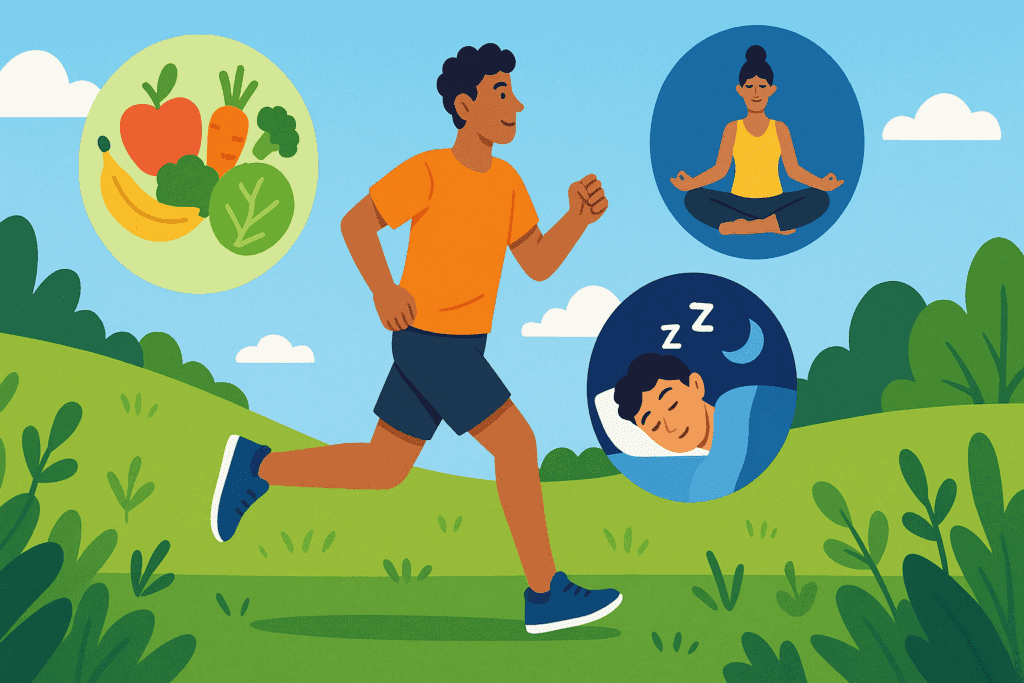
How to Get Systolic Blood Pressure Down: Lifestyle Interventions That Work
Lowering systolic blood pressure begins with targeted lifestyle interventions. A holistic, personalized approach is often more effective than relying solely on medication. Those exploring how to lower top bp number should begin with dietary modifications. The DASH (Dietary Approaches to Stop Hypertension) diet, which emphasizes fruits, vegetables, whole grains, and low-fat dairy, has been repeatedly shown to reduce systolic blood pressure by up to 11 mm Hg. Reducing sodium intake to under 1,500 mg per day while increasing potassium intake can have a significant impact, especially in salt-sensitive individuals.
Physical activity is equally critical. Moderate aerobic exercise, such as brisk walking, swimming, or cycling for at least 150 minutes per week, improves vascular function and reduces arterial stiffness. Resistance training adds additional benefits by improving metabolic health and supporting healthy weight loss. For those wondering how to lower heart rate and blood pressure simultaneously, regular cardiovascular exercise is one of the most effective strategies. It not only reduces blood pressure but also improves autonomic regulation, reducing the overactivation of the sympathetic nervous system.
Stress management cannot be overlooked. Chronic psychological stress contributes to elevated cortisol levels, which in turn promote sodium retention and vascular constriction. Mindfulness-based practices, yoga, tai chi, and even deep breathing techniques have demonstrated positive effects on both systolic and diastolic pressures. People frequently ask how to lower blood pressure while sleeping, and this often comes down to improving sleep quality. Addressing sleep apnea, reducing nighttime cortisol levels, and establishing a consistent sleep schedule are key steps.

Pharmacological Treatment: When Lifestyle Changes Aren’t Enough
While lifestyle changes are the foundation of blood pressure management, some individuals will require pharmacological intervention to bring systolic levels into a safe range. The decision to initiate medication often depends on the degree of elevation, the presence of other cardiovascular risk factors, and how well the individual responds to lifestyle measures. Common medications used to treat high systolic blood pressure include ACE inhibitors, calcium channel blockers, diuretics, and angiotensin II receptor blockers. Each class works differently, targeting various aspects of vascular resistance and fluid retention.
In patients with isolated systolic hypertension, calcium channel blockers are often preferred because they specifically target arterial stiffness, a key factor in elevated systolic readings. Diuretics can be useful for reducing volume overload, particularly in individuals with kidney involvement. However, medications are not a substitute for lifestyle changes. Even when pharmacologic therapy is required, combining it with diet, exercise, and stress reduction will yield better long-term outcomes. Individuals should always work with a healthcare provider to find the right combination of treatments tailored to their unique physiology.
Why Is My Systolic BP High Despite Medication?
It can be frustrating to see little progress despite being on medication, and many people find themselves asking, why is my systolic BP high if I’m doing everything right? Several factors could explain this phenomenon. First, not all medications are equally effective in every individual. Some people may require a combination of two or more drugs to achieve optimal control. Second, underlying conditions such as sleep apnea, chronic pain, or thyroid dysfunction may be counteracting the medication’s effects.
Poor adherence to treatment regimens is another common but often unspoken issue. Missing doses or failing to take medication consistently can lead to rebound hypertension or fluctuating blood pressure. Furthermore, lifestyle choices—such as continued high sodium intake, excessive alcohol, or persistent stress—can undermine the effectiveness of pharmacologic treatments. In such cases, a reevaluation of the current treatment plan, including the addition of ambulatory blood pressure monitoring, may be warranted to identify patterns and optimize therapy.
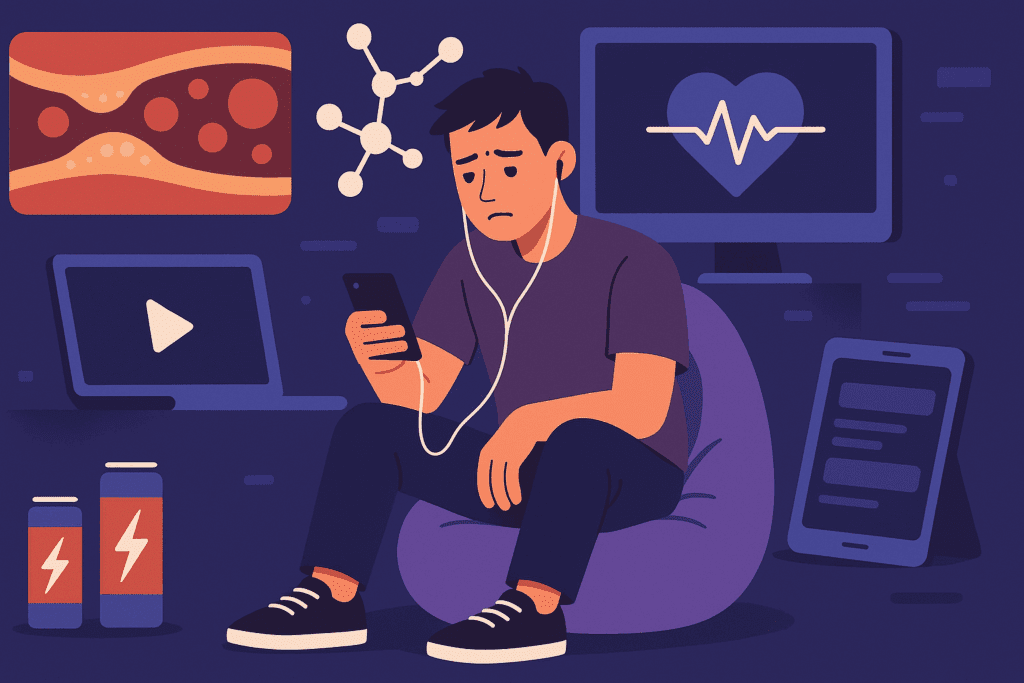
What Causes Top Number of Blood Pressure to Be High in Younger Adults?
While systolic hypertension is more common in older adults, younger individuals are not immune. In people under 40, the causes of elevated systolic blood pressure often differ from those seen in older populations. Overactivity of the sympathetic nervous system, poor sleep hygiene, stimulant use (including energy drinks or certain medications), and unrecognized secondary causes such as kidney disease or hyperthyroidism are frequent culprits. Sedentary lifestyles and poor dietary patterns also contribute significantly.
Younger adults who ask what causes high systolic BP may also be experiencing early vascular dysfunction due to insulin resistance, chronic inflammation, or elevated stress levels. These factors collectively contribute to increased vascular tone and stiffness, even in the absence of traditional risk markers. Addressing these issues early can prevent progression to full-blown hypertension and reduce the lifetime risk of cardiovascular disease. Routine screening and early intervention are crucial for younger adults who may otherwise feel invincible.

How to Lower Pulse and Blood Pressure Together
Systolic blood pressure and resting heart rate are closely linked. High readings in both may indicate overactivation of the sympathetic nervous system, poor fitness, or underlying metabolic dysfunction. Many patients wonder how to lower pulse and blood pressure simultaneously, and the answer lies in targeting the root causes that drive both metrics upward. Regular aerobic exercise improves vagal tone, which slows the heart rate and reduces vascular resistance. This dual benefit makes it a cornerstone of holistic cardiovascular care.
Mind-body practices like meditation, deep breathing, and progressive muscle relaxation can also help by downregulating the body’s stress response. Nutritional strategies that reduce systemic inflammation, such as adopting an anti-inflammatory diet rich in omega-3s and antioxidants, support both lower blood pressure and improved heart rate variability. Reducing caffeine and nicotine, avoiding processed foods, and improving hydration are practical daily habits that further support healthy cardiovascular metrics.
Frequently Asked Questions: High Systolic Blood Pressure
What are some lesser-known causes of high systolic blood pressure that often go undetected?
High systolic blood pressure can be influenced by several underrecognized factors beyond the common culprits like sodium intake or obesity. Environmental toxins—such as long-term exposure to heavy metals like lead or cadmium—can impair endothelial function, leading to elevated systolic readings. In some individuals, chronic low-grade infections or autoimmune conditions subtly increase inflammation, which can alter vascular tone and contribute to high systolic blood pressure. Additionally, frequent use of over-the-counter medications such as NSAIDs, decongestants, or certain herbal supplements can raise the top number of blood pressure without being immediately obvious. Understanding what causes increased systolic blood pressure in these contexts requires thorough medical evaluation and attention to overlooked contributors.
Can dehydration raise systolic blood pressure and if so, how?
Yes, dehydration can paradoxically cause the top number of blood pressure to rise, particularly in individuals who are already prone to vascular instability. When the body lacks adequate fluids, it compensates by narrowing blood vessels to maintain pressure and perfusion, which can increase systolic values. This compensatory vasoconstriction is one of the often-missed causes of elevated systolic pressure, especially in athletes or older adults. Furthermore, dehydration can affect electrolyte balance—particularly potassium and magnesium—both of which help regulate vascular tone. If you’re wondering what makes systolic blood pressure high during travel or hot weather, dehydration may be an unrecognized culprit.
How does mental health affect systolic blood pressure in the long term?
Chronic anxiety, depression, and unprocessed emotional trauma are emerging as significant high systolic blood pressure reasons. These mental health conditions activate the hypothalamic-pituitary-adrenal (HPA) axis, increasing cortisol and adrenaline levels. Over time, this hormonal shift keeps the vascular system in a heightened state of tension, which elevates the top number of blood pressure. Those asking why is my systolic pressure high despite no obvious physical causes should consider the cumulative impact of psychological stressors. Integrating mental health support, such as cognitive behavioral therapy or mindfulness-based stress reduction, can be a meaningful part of learning how to lower top bp number effectively.
Are there occupational risk factors for developing elevated systolic pressure?
Certain job environments can subtly influence blood pressure regulation. High-demand, low-control occupations—such as air traffic controllers, emergency responders, or corporate executives—have been shown to increase the risk of persistent high systolic readings. Long hours of sedentary desk work also contribute to vascular stiffness and sympathetic nervous system overactivation. For professionals wondering what causes high systolic BP even with regular physical exams, occupational stress may be a key, often overlooked factor. Noise pollution in industrial environments is another underappreciated contributor, as it triggers stress pathways linked to high blood pressure. Recognizing and modifying these external stressors is part of a comprehensive plan for how to get systolic blood pressure down.
How can breathing techniques specifically target elevated systolic blood pressure?
Controlled breathing practices, particularly slow diaphragmatic breathing and coherent breathing, directly modulate the parasympathetic nervous system. This calming effect reduces sympathetic drive, which is one of the physiological reasons behind what causes the top number of blood pressure to be high. Studies have shown that practicing deep breathing for just 10 minutes a day can reduce systolic blood pressure by 4 to 10 mm Hg in some individuals. While it might seem too simple to be effective, these techniques work on the root nervous system imbalances that sustain high systolic pressure. For those seeking non-pharmacological strategies on how to lower heart rate and blood pressure together, breathwork can be an efficient, portable tool.
What role does altitude play in systolic blood pressure fluctuations?
Living or traveling at high altitudes can impact systolic pressure due to changes in oxygen availability. In response to reduced oxygen levels, the body may constrict blood vessels and increase heart rate to optimize oxygen delivery to tissues. These adaptations often lead to transient increases in systolic blood pressure, particularly in individuals not acclimated to such environments. If you’re tracking your numbers and wondering why is my systolic BP high while on vacation in the mountains, this natural physiological response may explain the fluctuation. Hydration, rest, and gradual acclimatization can help mitigate these effects and support more stable readings.
Can certain sleeping positions impact systolic pressure levels overnight?
Interestingly, your sleeping posture can influence overnight blood pressure regulation. Some studies suggest that sleeping on your right side or back may facilitate better vascular dynamics than sleeping on your left side, which may increase cardiac compression in certain individuals. Those researching how to lower blood pressure while sleeping may also benefit from elevating the head of the bed slightly to reduce nocturnal sympathetic activity. The connection between sleep posture and what makes the top number of blood pressure high is still being explored but appears promising. Optimizing both sleeping position and quality may serve as a subtle yet effective strategy to reduce elevated systolic pressure.
How do hormonal fluctuations contribute to elevated systolic readings in women?
Hormonal changes across the menstrual cycle, during pregnancy, and particularly in perimenopause and menopause, can significantly affect vascular tone. Declining estrogen levels reduce nitric oxide production, which impairs vasodilation and contributes to increased arterial stiffness. For women asking what causes top number of blood pressure to be high during midlife transitions, hormonal shifts are often involved. The interplay between insulin resistance, abdominal weight gain, and cortisol spikes during this life stage amplifies the risk. Tailored lifestyle and medical interventions aimed at hormonal balance may be essential for women seeking to understand how to lower top number of blood pressure in a way that considers gender-specific physiology.
Is there a connection between gut health and systolic blood pressure regulation?
Emerging research suggests that the gut microbiome plays a substantial role in blood pressure regulation. A diverse and healthy microbiome supports better nitric oxide production and reduces systemic inflammation, both of which directly impact vascular function. Disruptions in the microbiome—due to poor diet, antibiotics, or chronic stress—can contribute to what causes increased systolic blood pressure. Prebiotics, probiotics, and fermented foods may offer new avenues for managing high systolic readings by restoring microbial balance. For those struggling to understand why is my systolic blood pressure high despite standard interventions, gut health may offer valuable, often overlooked clues.
Can music therapy or sound exposure impact systolic pressure regulation?
Yes, specific types of music—particularly those with a tempo of 60–80 beats per minute—have been shown to reduce stress hormones and modulate cardiovascular rhythms. Listening to calming classical music or binaural beats for 20 minutes a day can aid in lowering both pulse and blood pressure, especially when combined with relaxation techniques. Sound therapy works by shifting brainwave patterns and influencing autonomic nervous system activity. For individuals exploring how to lower pulse and blood pressure without medications, music-based interventions may be a useful adjunct. This integrative approach is gaining traction in wellness clinics as part of holistic strategies to address causes of high systolic pressure from multiple dimensions.
Final Thoughts on How to Get Systolic Blood Pressure Down Safely
The journey to lowering systolic blood pressure requires a multidimensional, patient-centered approach. Whether you’re asking what makes the top number of blood pressure high or seeking strategies for how to lower the top number of blood pressure effectively, the solution lies in understanding the underlying mechanisms and applying targeted interventions. High systolic blood pressure reasons vary across individuals, which is why personalized care rooted in clinical evidence yields the best results.
It’s essential to recognize that elevated systolic pressure is not just a numerical abnormality but a sign of deeper vascular stress and potential cardiovascular risk. Fortunately, there are proven methods to lower it—through lifestyle modifications, medical management, and regular monitoring. For anyone who has wondered what does high systolic pressure mean or why is my systolic BP high, the answers are both scientific and actionable. By implementing a structured, informed plan that addresses diet, exercise, stress, sleep, and where needed, medication, individuals can significantly reduce their systolic readings and improve their overall cardiovascular health.
Managing elevated systolic pressure is not a one-time fix but an ongoing process. With the right support, education, and commitment, you can gain control over your blood pressure and reduce your risk of serious complications. Whether your concern is how to lower blood pressure while sleeping or understanding what causes elevated systolic pressure in your unique case, knowledge is your most powerful tool—and with the right application, it becomes the foundation of lasting heart health.
Was this article helpful? Don’t let it stop with you. Share it right now with someone who needs to see it—whether it’s a friend, a colleague, or your whole network. And if staying ahead on this topic matters to you, subscribe to this publication for the most up-to-date information. You’ll get the latest insights delivered straight to you—no searching, no missing out.
Further Reading:
About Isolated Systolic Hypertension (High Systolic Blood Pressure)
What Is Isolated Systolic Hypertension?
Causes, implications, and treatment of systolic hypertension


